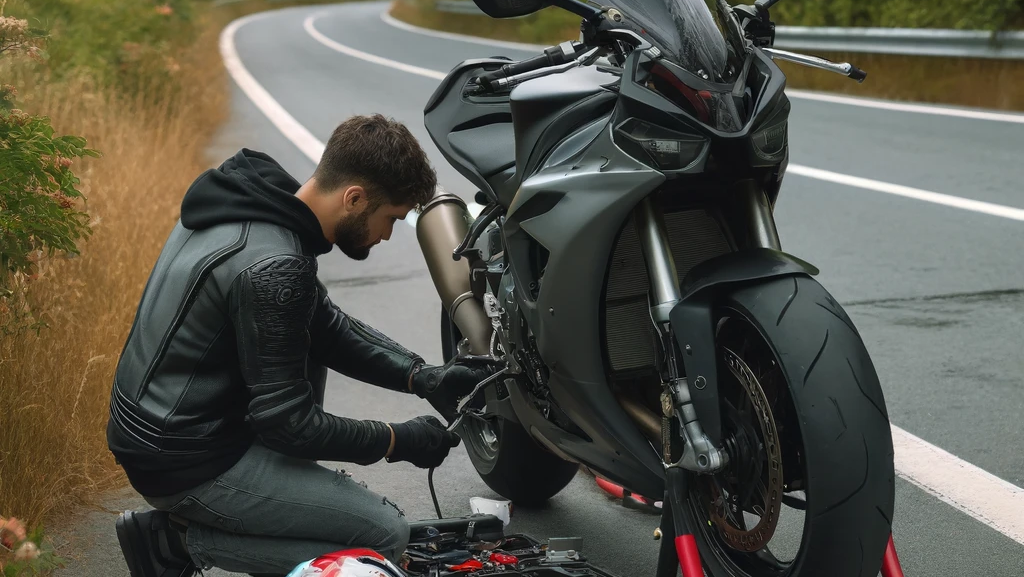Getting stuck on the side of the road with a broken-down motorcycle is every rider’s nightmare. But with the right knowledge and a bit of preparation, you can turn a potential disaster into a manageable situation. This guide will walk you through essential tips for repairing your motorcycle on the move, so you can keep cruising without too much hassle.
Table of Contents
- Basic Troubleshooting Steps
- Essential Tools for On-the-Go Repairs
- Common Motorcycle Issues and Quick Fixes
- Preventative Measures to Avoid Breakdowns
- Frequently Asked Questions
Basic Troubleshooting Steps
Before diving into complex repairs, start with these basic troubleshooting steps to identify the issue:
- Check the Fuel: Ensure you have enough fuel. Sometimes, the simplest solution is the most overlooked.
- Inspect the Battery: Look for loose connections or corrosion on the terminals. A quick clean or tighten might do the trick.
- Examine the Spark Plugs: Faulty spark plugs can prevent your bike from starting. Remove and inspect them for signs of wear or damage.
- Look for Leaks: Check for any oil or fluid leaks that could be causing problems.
- Listen for Unusual Noises: Strange sounds can give you clues about what’s wrong.
Essential Tools for On-the-Go Repairs
Having the right tools can make all the difference when you’re stranded. Here’s a list of must-have items for your toolkit:
- Multi-tool: A versatile tool that includes screwdrivers, pliers, and a knife.
- Tire Repair Kit: Includes tire patches, a pump, and CO2 cartridges.
- Mini Socket Set: Useful for various nuts and bolts.
- Cable Ties: Handy for securing loose parts temporarily.
- Duct Tape: Can be used for a multitude of quick fixes.
- Flashlight: Essential for night-time repairs.
- Spare Fuses: Electrical issues can often be resolved with a quick fuse replacement.
Common Motorcycle Issues and Quick Fixes
Flat Tire
- Fix: Use a tire repair kit to patch the hole. If you have a tubeless tire, use a plug. Inflate the tire using a pump or CO2 cartridges.
Dead Battery
- Fix: If you’re carrying a portable battery pack, use it to jump-start your bike. Ensure all battery connections are secure.
Chain Problems
- Fix: If the chain is too loose, use your toolkit to adjust the tension. For a broken chain, you’ll need a chain repair kit to temporarily fix it until you can replace it.
Overheating
- Fix: Let the engine cool down. Check coolant levels if applicable, and ensure there’s no blockage in the radiator. Avoid riding until the bike cools off.
Preventative Measures to Avoid Breakdowns
Prevention is better than cure. Regular maintenance can save you from many roadside headaches:
- Regular Inspections: Perform routine checks on your bike’s major systems (tires, brakes, lights, oil levels).
- Service Schedule: Stick to your motorcycle’s service schedule for oil changes, tune-ups, and other maintenance.
- Tire Care: Keep tires properly inflated and check for wear and tear regularly.
- Battery Maintenance: Clean terminals and ensure the battery is charged.
- Fluid Levels: Regularly check and top off oil, coolant, and brake fluids.
Frequently Asked Questions
What should I do if my motorcycle won’t start?
First, check the basics: fuel, battery, and spark plugs. If everything looks good, there might be a more serious issue that requires professional help.
How often should I perform maintenance on my motorcycle?
Follow the manufacturer’s guidelines, but a general rule is to do a thorough check every 3,000 to 5,000 miles.
Can I use car tools for motorcycle repairs?
Some car tools can be used, but it’s better to have a set specifically designed for motorcycles, as they’re typically more compact and versatile for the smaller components.
What’s the best way to learn motorcycle repairs?
Start with your bike’s manual, watch online tutorials, and consider taking a basic motorcycle maintenance course.

